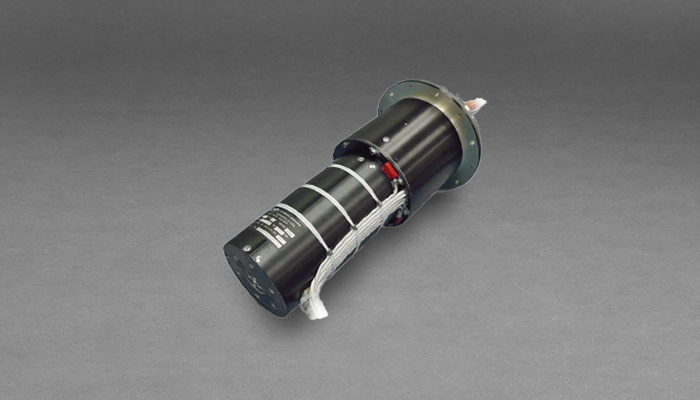High Power Type 5 Solar Array Drive Assembly
Jump To:
Overview
Specifications
Resources
Related Markets
Related Products
Key Features:
- Design is based on Moog Type5 rotary output stage
- Integrated slip ring assembly for power and data transfer is mounted on the rear of the actuator
- Integrated potentiometer position feedback
- Low weight
- Zero backlash
- Slip ring assembly capable to 6A derated current for power circuits
Specifications
| Parameter | Units | Basis | Data |
Output Step Angle |
Degrees | Standard | 0.0075 |
| Steps per Revolution | Steps | Standard | 48000 |
| Max. Output Step Rate | Steps/sec (Deg/sec) | Maximum | 300 (2.25) |
| Backlash | Degrees | Maximum | zero backlash |
| Operating Temperature Range | °C | Maximum | -50 to +70 |
| Torsional Stiffness | lb-in/Rad | Minimum | 250,000 |
| Moment Stiffness | lb-in/Rad | Minimum | 500,000 |
| Axial Stiffness | lb/in | Minimum | 200,000 |
| Radial Stiffness | lb/in | Minimum | 800,000 |
| Output Load Capability Axia | lbf | Nominal | 370 |
| Radial Stiffness | lbf | Nominal | 370 |
| Moment | Lb-in | Nominal | 430 |
| Output Torque | Lb-in | Minimum | 400 |
| Mechanical Accuracy | Degrees | Better than | +/- 0.02 |
| Unpowered Holding Torque | Lb-in | Minimum | 300 |
| Powered Holding Torque | Lb-in | Minimum | 600 |
| Slip-Ring Signal Circuits | 16 Rings derated at 1 A each | 16 Rings derated at 1 A each | 16 Rings derated at 1 A each |
| Actuator Power Consumption | Watts | Maximum | 20 |
| SADA Weight (without Harness) | Lb | Maximum | 11.00 |
Resources
Datasheets, Brochures and Catalogs
Infographics
Related Markets
Space
Moog has designed and manufactured components and systems for satellites and launch vehicles for more than 60 years.
Spacecraft Technologies
Moog is a proven leader in components, subsystems, and systems for spacecraft of all sizes, from smallsats to GEO spacecraft. Moog has been successfully providing spacecraft controls, inspace propulsion, and major subsystems for science, military, and commercial operations for more than 60 years.

